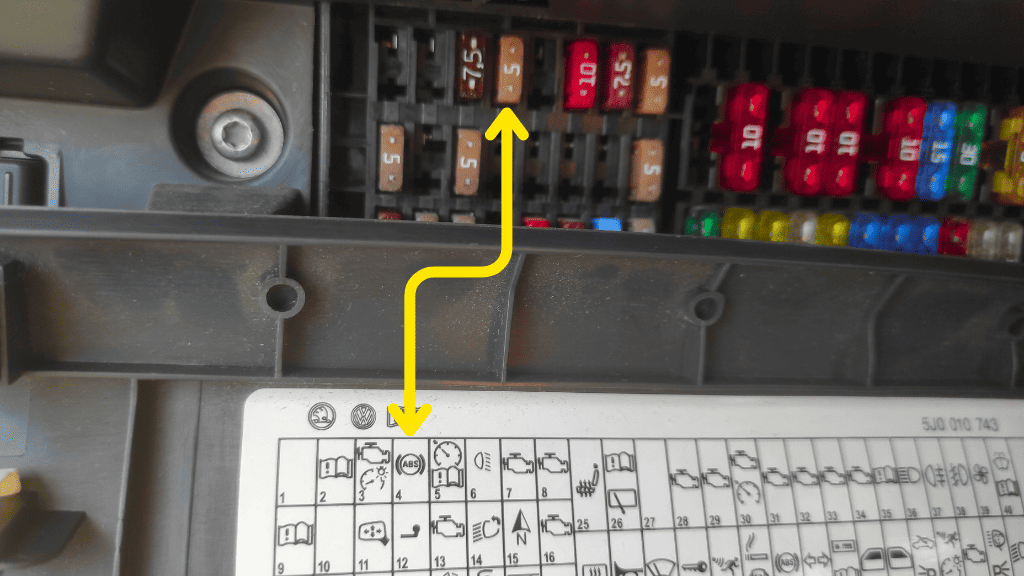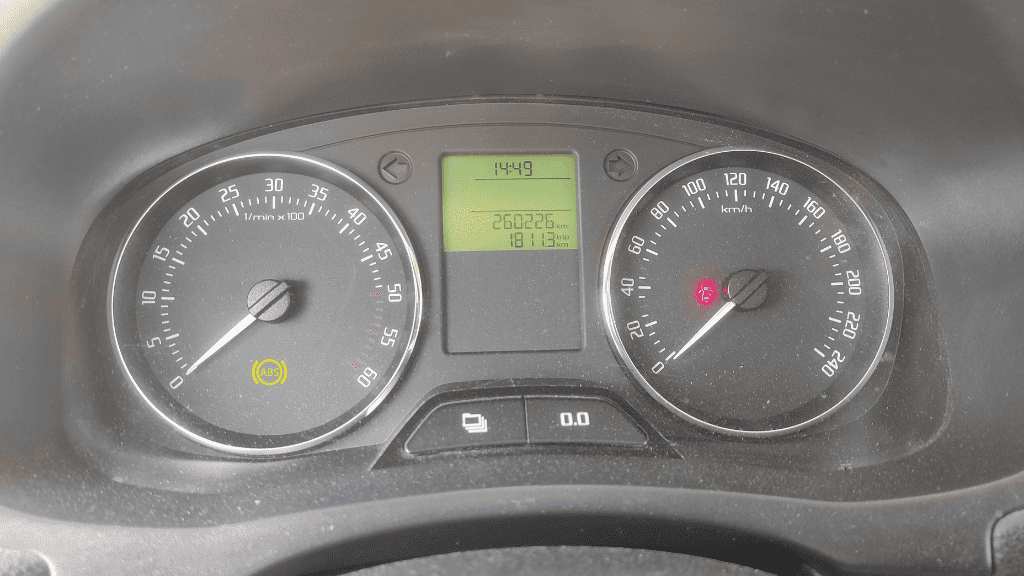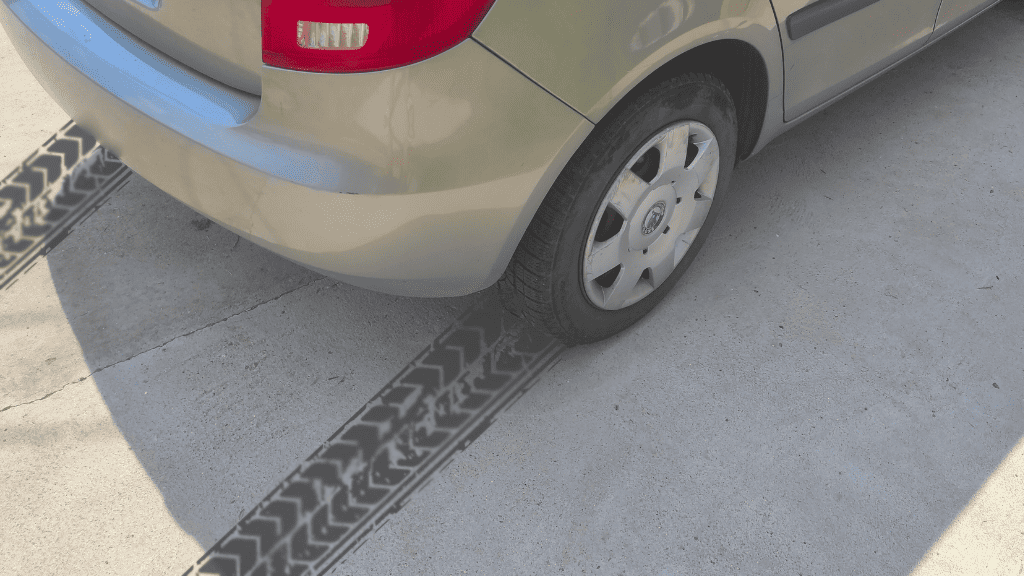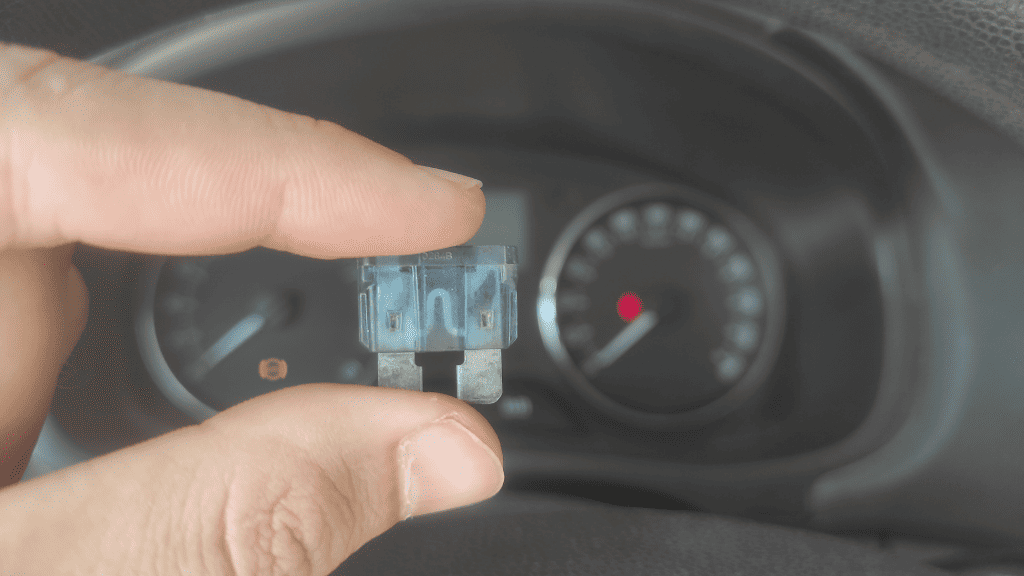What Happens If I Remove the ABS Fuse
Whether you wish to go for some exciting off-road driving or you are having problems with your Anti-lock Braking System, there are multiple reasons why you may wish to remove your ABS fuse.
Now, you’re worried about the safety of doing this.
Keep on reading as we tell you exactly what to expect when the fuse is gone. You also learn whether you should remove it in the first place and how to replace it if it is faulty.
Let’s get right in.
What Happens If I Remove the ABS Fuse
Any time the fuse is taken out or blown, the ABS stops working. With this, you expect the ABS warning light to come on at the dashboard and your tires to lock. Although your brakes still work normally, you experience increased braking distance as cars are harder to steer during emergency braking.

The Anti-lock Braking System fuse performs its function like any other fuse in your car. Removing it simply prevents current from flowing to the ABS. This will be further explained.
Fuses, as we have explained in our full fuse guide, are devices that protect other components within a circuit from overcurrent.
They have a metal link inside of them that connects from one end to another. When excess current flows through the link, it melts, hence creating a gap in the fuse.
Understand that current always passes through fuses before reaching the protected device.
This means that when a gap is created in a fuse, a gap is created in the whole circuit. This cuts off the power supply to the device.
In the case of your Anti-lock Braking System, removing a fuse is synonymous with having a blown unit or creating a break in the circuit.
You cut off the power supply to it, which causes it to stop functioning entirely.
What does the Anti-lock Braking System do?
The Anti-lock Braking System is an automated system used in land and air vehicles to prevent skidding while braking.
Its main function is to prevent the wheels from locking up any time you hit the brake, allowing you to have more control of the car.
As skidding is expected during emergency brake situations, the Anti-lock Braking System is important in preventing fatal accidents.
The ABS also makes use of two fuses. One of these controls the power supply to the relay, which activates and closes when the ignition is turned on.
When the relay contacts close, the other fuse then allows power to flow to the rest of the anti-lock braking system.
Due to the work the ABS does in the car, you then experience the following symptoms any time you take out the fuses:
- The ABS Warning Light Illuminating the Dashboard
Your car dashboard is filled with a lot of lights and one of these is the ABS warning light.
This is usually an indicator with “ABS” clearly written on it and illuminated with a yellow, orange, or amber light.
The warning light is a simple indication that there is a problem with your ABS. It is, therefore, expected to come on any time you remove the fuse.
Among other problems, the warning light coming on is also a great way to know that your fuses have blown when you didn’t remove them yourself.

- Tires Locking
Ordinarily, the process of braking in cars involves applying brake pad friction on your wheels to slow down the speed at which they rotate.
Any time you hit the brakes too hard, like in cases of emergencies, the friction applied is so much that the wheels entirely stop rotating. This causes a wheel or tire lock.
Wheel locks make the rear end of your car dangerously swing when you brake hard and the Anti-lock Braking System is specifically designed to prevent this.
The ABS makes use of sensors and valves to monitor and reduce the pressure or friction from the brake pads.
It ensures the wheels are kept at the state just before they lock up but never stop rotating.
All this means that when your ABS stops working (when you remove the fuse), your tires lock up during these emergency braking situations.

- Longer Stopping Distances
Alongside providing increased car control, the ABS generally reduces your braking distance on regular road surfaces.
Without it, however, you always have to deal with long braking distances due to reduced command over your car. There’s a catch, however.
On surfaces made of gravel or surfaces covered with thin ice, the ABS may make your braking distance longer.
This is because the sensors have difficulty measuring pressure in these situations and frequently lock and unlock the wheels.
Nonetheless, it still provides the all-important benefit of controlling cars when braking.
When you take out your fuses, you experience longer braking distances as your ABS doesn’t work or perform its function.

Do You Need to Remove the ABS Fuse?
If you are thinking of removing the fuses from your car without replacing them, we advise you against this.
As explained, the ABS plays an important role in preventing fatal occurrences when you hit the brakes hard. Removing the fuses means you essentially turn off your ABS.
What you should be concerned with is identifying whether your fuse is faulty, how to replace it, and whether your problem with the ABS comes from another part of your car.
How to Check If the ABS Fuse Is Blown
The primary ABS fuse is typically located in the fuse box under the car hood. This is the fuse box in the engine compartment next to the battery and on the passenger side of the vehicle.
This location varies between car models, however, so you would want to refer to your car manual to be absolutely sure.
With a lot of fuses in the box, you also refer to the box cover or your car manual to identify the exact fuse protecting your ABS.
When you find this fuse, you then either engage in a visual inspection or test the fuse with a multimeter to know if it is working or not.
Visual Inspection
Automotive fuses typically have transparent colored cases and blade ends.
A visual inspection of your fuses involves checking for dark spots inside or outside the case or checking for a break in the fuse link.
You also check whether the case looks foggy inside. The presence of any of these means that the fuses may have blown and need replacement.

Multimeter Test
The multimeter test on your fuse is more accurate than visual inspections as you can identify invisible faults.
This test involves setting the multimeter to the continuity mode or resistance setting represented with the Ohm symbol (Ω). You then place the multimeter probes on the two blades of the fuse.
If the fuses are in good condition, the multimeter beeps when set to continuity mode or shows a value between 0 and 0.5 when in the resistance setting.
If the fuses are faulty, the multimeter doesn’t beep, displays “OL” or shows a high resistance value. In any of these scenarios, you then need to replace it.
To have a comprehensive understanding of this testing process, you can use our guide on testing fuses with a multimeter.
If you don’t have a multimeter or don’t know how to use one, you can also test fuses without a multimeter.
Once you’ve confirmed that the fuse is faulty, you then replace it.
How To Replace an ABS Fuse
Replacing your fuses isn’t hard, but it goes deeper than just removing an old fuse and installing a new one into the box.
Fuses have specific ratings that must be followed for them to adequately protect the ABS from electrical surges.
When you install a new replacement with a higher rating, you risk damaging the ABS as you allow excess current to flow to it.
If you install a new one with a lower rating, you experience nuisance-blowing. It blows regularly even with a safe current supply.
Before installing a new replacement, you then want to check your car manual or device specifications for the precise rating suitable for it.
In this guide, we explain the procedure for replacing a car radio fuse, which is the same for the ABS fuse as well.
You can refer to the internet to make the whole search easier. Sometimes the rating is written on the old fuse or the box cover.
Once you install a new replacement, you proceed to check if the ABS works properly. If it is not working, your problem with it is coming from another part of your car.
Additionally note that if your new replacement blows out just after installing it, there is an electrical fault in your vehicle and the fuse is not the primary culprit.
You have to repair this fault before you install another replacement.
Other Problems With the ABS
If your fuses are not the culprit, there are other faults you may check with the anti-lock braking system. Some of these include:
- One or more sensors contaminated with metal shavings or debris
- Damaged sensor wires, which may cause intermittent ABS working conditions or a total lack of function
- Contaminated brake fluids
- A faulty hydraulic control unit
Checking these other components in your vehicle for any faults should be your next step in diagnosing a problem with your ABS.
You repair any faulty component so your anti-lock braking system starts functioning properly.
Frequently Asked Questions
Can you drive with ABS disconnected?
Yes, you can drive your car without the ABS. The ABS only makes your vehicle easier to steer during emergency braking. Your cars are still safe as long as your normal braking system is fine.
What happens if the ABS fuse is blown?
A blown ABS fuse causes the ABS to stop working. This leads to the ABS warning light coming on, tires locking, and a longer braking distance as the car is harder to control.

Author
Alex Klein is an electrical engineer with more than 15 years of expertise. He is the host of the Electro University YouTube channel, which has thousands of subscribers.
